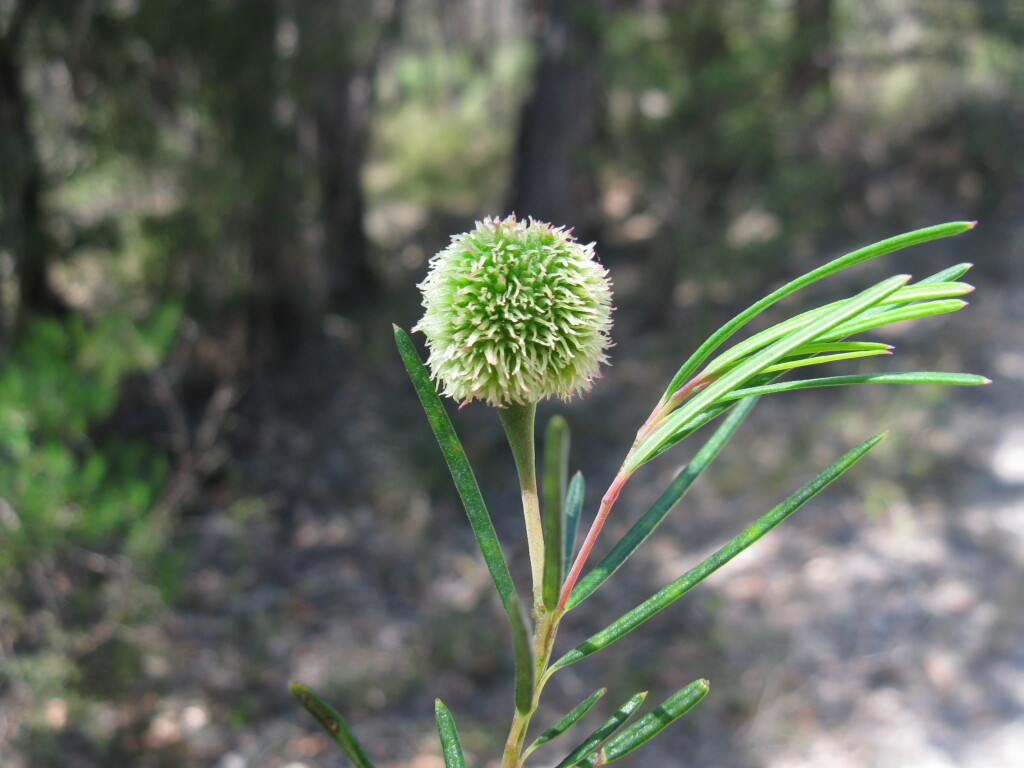Ricinocarpos pinifolius
Desf. Wedding BushErect shrub 1–3 m high, more or less glabrous. Leaves linear, mostly 1–4 cm long, 1–3 mm wide, apex blunt or mucronate, base tapering into petiole, margins recurved to revolute, lower surface hairy but usually obscured by margins; petiole to c. 3 mm long. Flowers in terminal clusters usually consisting of 1 female with 3–6 males (then females usually flowering first), or all males; peduncle 10–20 mm long. Calyx 3–4 mm long, teeth triangular, about as long as tube, hairy inside; petals ovate, 10–15 mm long, white. Capsule subglobose, c. 12 mm diam., densely muricate; seed obloid, 6–10 mm long, 3–5 mm wide, smooth, mottled. Flowers mostly winter and spring.
VVP, GipP, Gold, DunT, EGL, WPro, HSF, HNF, OtR, VAlp. Also NT, Qld, NSW, Tas. Apart from an isolated occurrence near Chapple Vale, and a few dubious old records from central and west Victoria, scattered and often locally common on coastal and near-coastal heaths east of Port Phillip Bay.
Jeanes, J.A. (1999). Euphorbiaceae. In: Walsh, N.G.; Entwisle, T.J., Flora of Victoria Vol. 4, Cornaceae to Asteraceae, pp. 55–82. Inkata Press, Melbourne.
 Spinning
Spinning

